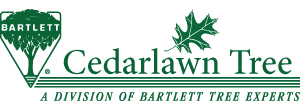Protect Your Birches from Bronze Birch Borer!
White-barked birch trees are highly desired and prized landscape trees. Unfortunately, there is an insect pest (bronze birch borer) that is very commonly found and is capable of killing these trees. Bronze birch borer adults are beetles around ½” in length and are bronze colored. These insects emerge as adults here in the Northeast most abundantly in June with females laying eggs on the bark of susceptible birch trees. After hatching, grub-like larvae bore into the trees and begin feeding in the cell-producing (cambial) and photosynthetic transport (phloem) areas of trees. This results in destruction of these tissues that often eventually leads to branch and trunk death and ultimately tree demise. Feeding continues until fall with adults emerging the following year.
Should you plant white-barked birches? Because of the susceptibility of these trees to birch borer precautions need to be taken. Studies have been conducted evaluating the susceptibility of various types of white-barked birches to bronze birch borer attack. These studies and our observations from the field would suggest European white birches (Betula pendula) and its weeping form (Betula pendula ‘Youngii’), along with Jacquemonti Birch (Betula jacquemontii) are best avoided. Our native birches, including paper (Betula papyrifera) and gray birch (Betula populifolia) seem to be a little less susceptible but damage to unprotected birches of these species at some point of their life is extremely likely. River birches, (Betula nigra), another native species, is a popular alternative as the threat of attack by bronze birch is extremely low. These differ from the birches just mentioned in that the bark is cinnamon-colored (and peeling or exfoliating on newer wood) rather than white. Clump forms of river birch can be easiliy obtained and grow rapidly.
Careful selection of an individual tree is important if you decide to plant a white-barked birch. Observe (and avoid if found) trees for signs of infestation including raised rings (around the trunks of trees. These rings are a response by the tree (increased cell/wood production around injured tissue) to feeding of the borer larvae. Once planted, keeping these trees as stress-free as possible through proper watering is important. Keeping trees growing well through mulching, watering and fertilizing can sometimes help ward off attack by bronze birch borer. We have seen some young trees with a few “rings” on trunks and/or branches we have taken over management survive initial infestation through a combination of growth management (water/nutrient) and protective treatments. Finally, if planting a white-barked birch tree be resigned to yearly protective treatment applications.
 Do I need to protect my white-barked birch in my yard? Odds are that at some point your tree will develop a bronze birch borer infestation of some degree. Signs include: 1) the ringing of branches and trunks as mentioned above 2) small, D-shaped exit holes in tree bark produced by emerging adults 3) brown, weeping spots on tree trunks and branches around feeding areas/adult emergence holes 4) first a thinning of growth at the top of trees and then dieback of trees trunks from top to bottom (infestation degrees can vary from trunk to trunk on clump birches- if caught in time perhaps some trunks in a clump can be saved). We have had good success in warding off infestations with our treatment regimes. Although we cannot guarantee success, we rarely lose birches in our care these days to bronze birch borer.
Do I need to protect my white-barked birch in my yard? Odds are that at some point your tree will develop a bronze birch borer infestation of some degree. Signs include: 1) the ringing of branches and trunks as mentioned above 2) small, D-shaped exit holes in tree bark produced by emerging adults 3) brown, weeping spots on tree trunks and branches around feeding areas/adult emergence holes 4) first a thinning of growth at the top of trees and then dieback of trees trunks from top to bottom (infestation degrees can vary from trunk to trunk on clump birches- if caught in time perhaps some trunks in a clump can be saved). We have had good success in warding off infestations with our treatment regimes. Although we cannot guarantee success, we rarely lose birches in our care these days to bronze birch borer.
Figure 1 : Birch tree showing raised bark “rings” indicating larval feeding




